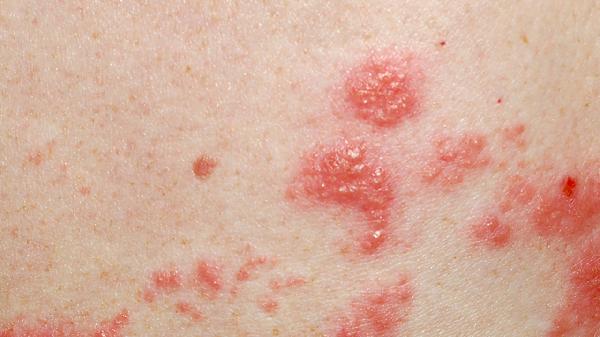People with AIDS and HIV carriers. The AIDS virus exists in the body fluids and organ tissues of infected individuals. The blood, semen, vaginal secretions, breast milk, and wound exudates of infected individuals contain a large amount of the AIDS virus, making them highly contagious. Tears, saliva, sweat, urine, and feces contain very little of this virus when not mixed with blood or inflammatory exudates and are not contagious.

Modes of HIV Transmission
1. Sexual Contact Transmission
The HIV virus is present in the semen and vaginal secretions of infected individuals and is transmitted through sexual intercourse (including vaginal, anal, and oral sex) between men and women, and between men and men. Worldwide, 9 out of 10 adults infected with HIV are infected through sexual intercourse. The more sexual partners one has, the greater the risk of contracting HIV. People with sexually transmitted diseases are more likely to contract HIV when engaging in sexual activity with an HIV-infected person.
Sexual contact is the primary mode of HIV transmission. Whether in homosexual or heterosexual intercourse, HIV transmission can occur. Globally, HIV is mostly transmitted through heterosexual contact. The transmission rates among adults are as follows:
Transmission Route | Transmission Rate
--- | ---
Heterosexual Transmission | 71%
Homosexual Transmission | 15%
Intravenous Drug Use | 7%
Blood Transmission | 5%
Other Unknown Reasons | 2%
In North America and Europe, male homosexual contact—particularly anal sex—is the primary mode of transmission. Homosexual and bisexual men constitute the largest group of HIV-infected individuals. In the early 1980s, AIDS cases in the United States were primarily concentrated among male homosexuals. Anal sex between male homosexuals often causes trauma to the anal and rectal mucosa, providing a pathway for the HIV virus to enter the bloodstream, allowing semen and pre-ejaculatory secretions containing large amounts of HIV to enter the bloodstream through damaged mucosa. Additionally, male homosexuals frequently change sexual partners, with some having dozens or even hundreds of partners, increasing the risk of HIV infection. In Africa, Latin America, and Southeast Asia, the majority of AIDS cases are transmitted through heterosexual vaginal intercourse. The male-to-female ratio of AIDS cases is 1:1. HIV transmission between heterosexuals can occur from male to female or female to male. Male-to-female transmission is more dangerous than female-to-male transmission. Both semen and cervical secretions can carry HIV. Anatomically, secretions can remain in the female body but not in the male body, making the exchange of semen and cervical secretions more effective in male-to-female transmission. In some African countries, there is a custom where a widow is inherited by her deceased husband's brother to prevent the loss of family property. However, in today's AIDS-ridden Africa, inheriting a brother's wife also means inheriting a deadly dowry—the HIV virus. An HIV-positive wife can transmit the virus to her husband's brother, making both male-to-female and female-to-male transmission important routes in Africa. Prostitution and solicitation play a significant role in the spread of AIDS. HIV-infected clients transmit the virus to prostitutes, who then transmit it to other clients. If sexually transmitted diseases are present, the chance of HIV transmission increases significantly, as genital sores and ulcers provide a pathway for the virus to enter the bloodstream. In Southeast Asia, the prevalence of prostitution has led to the rapid spread of HIV. For example, in Thailand, the HIV infection rate has increased at an alarming rate since 1990.
Bisexual men pose a high risk not only to male sexual partners but also to female sexual partners. Many bisexual men are married and may frequently solicit prostitutes. These bisexual men, who are married to or frequently have sexual contact with women, can introduce the virus from the homosexual population into the heterosexual population. Therefore, both homosexual and heterosexual behaviors of bisexual men play a significant role in HIV transmission.
The primary sexual behaviors associated with HIV transmission are anal and vaginal intercourse. Cases of HIV transmission through oral sex are rare and are considered low-risk. However, if there are oral mucosal sores or ulcers, the risk of HIV transmission through oral sex increases significantly.
2. Blood Transmission
HIV is primarily transmitted through the transfusion of HIV-contaminated blood and blood products or the use of HIV-contaminated needles and syringes that have not been properly sterilized. It can also be transmitted through the use of contaminated and improperly sterilized needles for tattooing, ear piercing, acupuncture, and sharing razors or toothbrushes with infected individuals.
Sharing HIV-contaminated injection equipment, receiving HIV-contaminated blood or blood components, and transplanting HIV-contaminated tissues or organs are all modes of blood transmission. In the United States and Western Europe, intravenous drug use is the second major mode of HIV infection. In some provinces and cities in southern China, intravenous drug use is a primary route of HIV transmission. HIV transmission occurs through sharing blood-contaminated needles, syringes, and other injection equipment. Drug users are often sexually active, and many HIV infections among them are due to sexual behavior. They engage in sexual transactions or prostitution to obtain drugs or money. Studies have found that in a hospital setting, the probability of HIV infection from a single puncture with an HIV-contaminated needle is 0.3%. Intravenous drug users often repeatedly draw blood to flush out the drug, leaving HIV-contaminated blood in the needle. Under normal room temperature, HIV can survive in blood for 15 days, and other drug users can become infected when using the contaminated syringe. The risk of HIV infection increases with the number of people sharing the syringe. On the other hand, drug use often increases the desire for sexual contact, and if sexual transactions are used to obtain drugs, the risk of HIV infection increases further.
Blood transfusion or blood components was one of the important routes of HIV transmission during the early stages of the AIDS epidemic. With the development of modern medicine, the use of blood transfusions and blood products has become increasingly widespread, saving countless lives. However, receiving HIV-contaminated blood or blood products directly introduces HIV into the bloodstream. Blood components such as Factor VIII concentrate are extracted from the plasma of many donors, increasing the chance of HIV contamination. About 6% of blood donors in the United States carry HIV, and Factor VIII concentrate produced in the early 1980s caused infections among hemophiliacs worldwide. A blood center in France was contaminated with HIV, leading to thousands of healthy recipients contracting AIDS. These painful lessons must be remembered. Developed countries have now strengthened the screening of blood donors, and China is also continuously improving the management of blood donors and blood products. If a blood donor is infected with HIV but is in the window period during donation, HIV antibodies may not be detected. Currently, not all blood donors are tested for HIV antigens due to the complexity and expense of the equipment. Therefore, strengthening and improving the screening system for blood donors is crucial, and blood transfusions and blood product transfusions must be approached with caution.
Organ transplantation is an important development in modern medicine, allowing patients with end-stage heart, lung, liver, and kidney diseases to gain a new lease on life. However, donated organs carry potential risks, and routine HIV antibody testing of organ donors can significantly reduce HIV transmission through organ transplantation. The U.S. Centers for Disease Control has reported several cases of HIV infection among recipients of kidney, liver, and bone marrow transplants. In developed countries where HIV is still prevalent, such iatrogenic transmissions are gradually decreasing. Although the number of people infected through this route is small, the impact is significant because it concerns public health.
3. Mother-to-Child Transmission
Mothers who are AIDS patients or carriers can transmit the HIV virus to their fetuses or newborns through blood during pregnancy or childbirth, or through breast milk after childbirth. One-third of children born to HIV-infected women may contract the virus from their mothers. Most children with HIV will die before the age of 3.
The earliest cases of child AIDS transmitted from mother to child were reported in 1982. This transmission can occur in the womb, during childbirth, or through breastfeeding with HIV-contaminated milk.
HIV can be transmitted to the fetus through the placenta. Studies have shown that HIV can be isolated from fetuses aborted at 8 weeks of gestation. The rate of mother-to-fetus transmission depends on the stage of the mother's HIV infection and her immune function, such as T4 lymphocyte count. Fetal HIV infection in the womb can affect embryonic development, leading to miscarriage or the development of AIDS at birth. The earlier the fetus is infected with HIV in the womb, the more likely it is to miscarry or have developmental issues. The earlier AIDS-related symptoms appear after birth, the shorter the survival time. At the Ndola Pediatric Hospital in Zambia, 265 neonatal HIV/AIDS patients were treated between 1989 and 1993, with 86% developing symptoms within the first three weeks of birth, including sepsis, bronchitis, severe jaundice, and skin lesions, and 74.5% dying within three months of birth. Neonates who developed symptoms within one month of birth generally did not survive beyond six months. Mother-to-child transmission can also occur during vaginal delivery if the fetus has skin or mucosal injuries, allowing HIV in the mother's blood to enter the fetus's bloodstream through the injured area. Studies have reported that cesarean sections can reduce the transmission of HIV from infected mothers to their infants.
HIV can be isolated from the breast milk of infected mothers, and breastfeeding can transmit HIV to the infant. There is a report of a mother who contracted HIV through a postpartum blood transfusion, and her infant contracted HIV after breastfeeding for six months. However, the exact probability of HIV transmission through breastfeeding is still unclear. U.S. health authorities have advised HIV-infected mothers not to breastfeed. In many African countries, due to poor economic conditions and insufficient breast milk substitutes, stopping breastfeeding would lead to severe malnutrition, endangering infant survival more quickly than HIV infection. Therefore, many African countries still advocate breastfeeding for HIV-infected mothers.
Measures to prevent mother-to-child HIV transmission include advising HIV-infected women not to become pregnant and to terminate the pregnancy if they are found to be pregnant. Most fetuses infected with HIV in the womb die before the age of 3, and those who survive will become chronically ill children and motherless orphans. This raises many ethical, moral, and emotional issues.
Treatment of AIDS includes four main aspects:
1. General Supportive Therapy: Includes physical and mental rest and nutritional support.
2. Control of Opportunistic Infections and Treatment of Malignancies: Most opportunistic infections have specific effective drugs, and various antibacterial, antifungal, and antiparasitic drugs are used to treat the opportunistic infections in AIDS patients under medical guidance. For malignancies, doctors decide whether to use radiotherapy, chemotherapy, or surgery.
3. Antiretroviral Drugs: Directly inhibit the activity of the virus's reverse transcriptase, preventing the virus from replicating in human cells. Currently, clinical drugs such as Azidothymidine (AZT) and Didanosine (DDI) are widely used. Some patients experience partial suppression of viral replication and a reduction in viral load after taking these drugs, but once the dosage is reduced or stopped, the virus levels rebound immediately. These drugs cannot cure AIDS but can slow the progression of the disease and extend survival.
In recent years, studies in the United States involving thousands of HIV-infected individuals treated with AZT have found that early use of AZT before the onset of symptoms can delay the onset of AIDS. Pregnant women infected with HIV who take AZT can reduce the risk of mother-to-child transmission, and their infants have a significantly lower HIV infection rate compared to those born to mothers who took a placebo.
4. Immune Support Therapy: One type of drug blocks the binding of HIV to human cells, mostly antibody-based. These can target viral surface antigens or T4 cell receptors to block their binding, but they are still in the experimental stage. Another type includes biological factors such as interferon and interleukin, which affect lymphocyte differentiation or growth, but they are still far from practical application. Recently proposed blood transfusion therapy also falls into this category.
Prevention of Mother-to-Child HIV Transmission
1. HIV-infected women should not become pregnant.
2. Recent clinical practice has found that administering antiretroviral drugs such as AZT to pregnant women three months before delivery can prevent 70% of HIV-infected mothers from transmitting the virus to their infants.
3. HIV-infected women should not breastfeed their infants after childbirth, as HIV can be transmitted through breast milk.
























